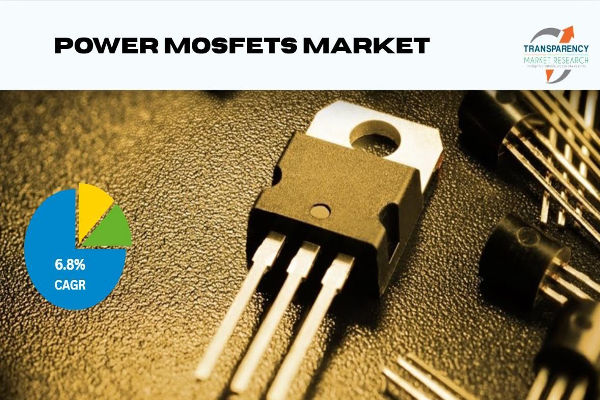In the world of modern electronics, efficient power management is the cornerstone of performance, reliability, and sustainability. From electric vehicles to smartphones, every device depends on effective energy conversion and control. At the heart of this process lies a crucial component: the Power MOSFET. Often unseen and underappreciated, these devices are the unsung heroes powering much of our digital world.
What is a Power MOSFET?
A Power MOSFET (Metal-Oxide-Semiconductor Field-Effect Transistor) is a type of transistor specifically designed to handle significant levels of power. Unlike standard MOSFETs used for signal processing in integrated circuits, power MOSFETs are optimized for high current and voltage applications, making them ideal for switching and amplifying electronic signals in power electronics systems.
They operate as voltage-controlled devices, where a small voltage applied to the gate terminal regulates a much larger current flow between the drain and source terminals. This high efficiency, combined with fast switching speeds, makes them indispensable in a wide range of power management applications.
How Power MOSFETs Work
The fundamental principle of operation for a power MOSFET involves the creation of an electric field to control the conductivity of a channel. When voltage is applied to the gate, it creates an electric field that modulates the conductivity of the semiconductor material beneath it, allowing current to flow between the source and drain.
There are two main types of power MOSFETs: enhancement-mode and depletion-mode, though enhancement-mode is more common in modern applications. Within enhancement-mode
MOSFETs, n-channel types are preferred due to their lower on-resistance and better performance in high-current applications.
Leading Manufacturers: Infineon, Renesas, Panasonic, Mitsubishi Electric, Toshiba, Hitachi, STMicroelectronics, Bosch, Sumitomo Electric, and Raytheon
Why Power MOSFETs Matter in Power Management
Efficient power management is vital for reducing energy consumption, improving system reliability, and minimizing heat generation. Power MOSFETs contribute to all these goals through:
1. High Efficiency
Power MOSFETs are capable of switching at high frequencies with low conduction and switching losses. This is especially important in applications like DC-DC converters, inverters, and power supplies where energy efficiency translates directly to longer battery life or lower electricity bills.
2. Fast Switching Speed
Thanks to their low gate charge and capacitance, power MOSFETs can switch on and off rapidly, making them suitable for high-frequency applications. This speed reduces the time during which both voltage and current are present, minimizing energy lost as heat.
3. Thermal Management
Power MOSFETs are designed to handle high currents while minimizing power dissipation. Many modern MOSFETs include features such as thermal shutdown or built-in heatsinks to prevent overheating and ensure operational safety.
4. Scalability and Integration
These devices are available in a wide range of voltage and current ratings, allowing them to be used in everything from milliwatt-level IoT devices to kilowatt-level industrial systems. Their compatibility with integrated circuits also supports compact and lightweight system designs.
Applications Across Industries
Power MOSFETs are deeply embedded in multiple industries due to their flexibility and performance:
- Consumer Electronics: Used in battery management systems, adapters, and display panels.
- Automotive: Key components in electric vehicle (EV) powertrains, charging systems, and advanced driver assistance systems (ADAS).
- Renewable Energy: Essential in photovoltaic inverters, wind turbine controllers, and battery energy storage systems.
- Industrial Automation: Found in motor drives, robotics, and uninterruptible power supplies (UPS).
- Telecommunications: Integral in power amplifiers, RF systems, and network equipment for ensuring efficient signal transmission.
Recent Innovations and Trends
The field of power electronics is rapidly evolving, and power MOSFETs are no exception. Several trends are shaping the next generation of these devices:
1. Wide Bandgap Semiconductors
Silicon carbide (SiC) and gallium nitride (GaN) are emerging materials that outperform traditional silicon in high-voltage, high-temperature environments. GaN MOSFETs, in particular, offer superior switching speeds and lower losses, making them ideal for fast-charging and compact power supply designs.
2. Integration with Digital Control
As more systems become intelligent and connected, power MOSFETs are increasingly being integrated with microcontrollers and digital signal processors. This allows for real-time control, predictive maintenance, and adaptive power regulation.
3. Miniaturization
With the demand for portable and wearable electronics, power MOSFETs are being designed to offer maximum performance in minimal space. Advanced packaging technologies like chip-scale packaging (CSP) and dual-sided cooling are enabling more efficient thermal management in smaller footprints.
4. Automotive-Grade Reliability
As EV adoption grows, there is a rising need for automotive-grade MOSFETs that can withstand harsh environmental conditions. Manufacturers are now focusing on devices that meet AEC-Q101 standards for enhanced ruggedness and reliability.
Challenges and Considerations
Despite their many advantages, selecting and designing with power MOSFETs requires careful consideration:
- On-Resistance (R<sub>DS(on)</sub>): Lower on-resistance means less heat and higher efficiency, but can lead to higher cost.
- Gate Drive Requirements: Improper gate drive design can lead to inefficient switching or device failure.
- Thermal Design: Even efficient MOSFETs generate heat; managing this heat is crucial for longevity and performance.
- Parasitic Elements: Inductance and capacitance in the layout can cause ringing or voltage spikes, especially at high switching speeds.
Conclusion
Power MOSFETs are truly the workhorses of modern electronics, delivering the performance and reliability needed for today’s power-hungry and energy-conscious world. Whether it’s making your laptop last longer, your electric car drive farther, or your solar panels more effective, power MOSFETs play a silent yet vital role.
As technology continues to evolve, these components will only grow in importance. With advancements in materials, design, and integration, power MOSFETs are set to become even more efficient, compact, and intelligent—pushing the boundaries of what’s possible in power management.
The following analysis is based on findings from Transparency Market Research’s (TMR) report on the Power MOSFET Market.













